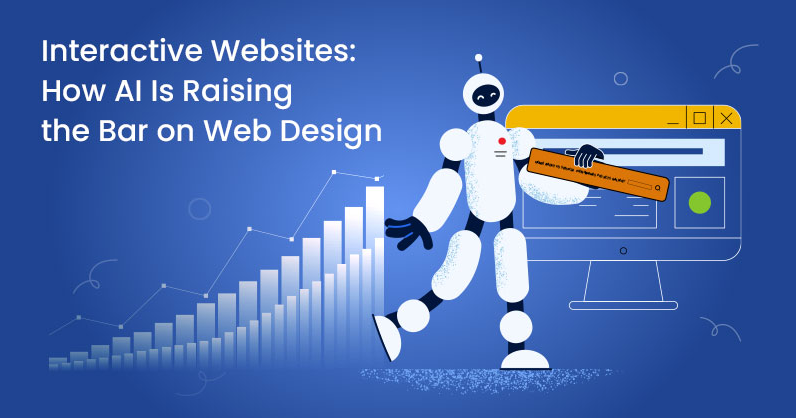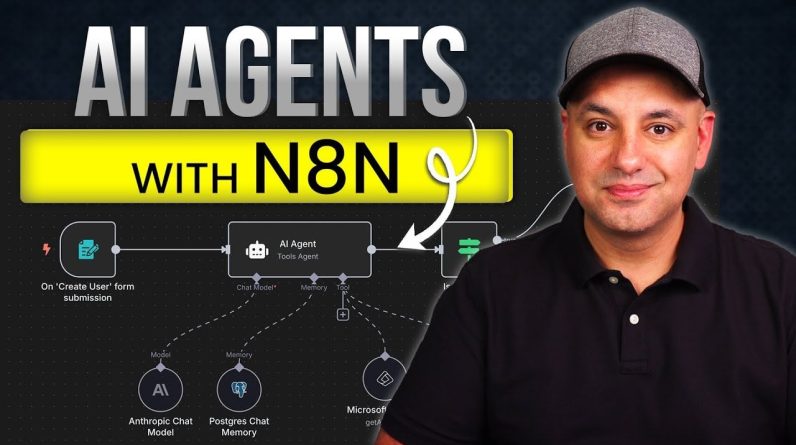
Who remembers their first-generation website? A quick walk down memory lane brought back memories of clumsy web structures based on frames. We used editing apps like FrontPage and Dreamweaver. Flash may have created moving parts, but it resulted in sites that were too big to load. Steve Jobs called Flash “buggy, a CPU hog, and a crash causer.”
Websites have come a long way and technology keeps raising our expectations with interactive elements. Those static pages with too much boring information have evolved into immersive experiences.
Content remains important for interactive websites
The use of animations, interactive elements and seamless transitions provide a visual experience. It might be a whimsical brand story or an interactive game-like interface. While content has never been more important for SEO, experiential websites are changing how we engage with online content.
Thoughtful interface and navigation have always been part of good website design
Well-designed user interface guides visitors through the website. The overall design should be visually appealing and intuitive. It must also be a responsive design to seamlessly adjust to devices and screen sizes.
Keep in mind that thoughtful navigation and smart user interfaces are not new to website design. They’ve always been key to designing an effective website. It requires careful thought to organize information into logical groupings and develop an interlinking strategy to encourage drill down through the site.
Interactive elements encourage users to actively engage with the content. Look for clickable buttons and sliders, scroll-triggered animations and parallax effects. Microinteractions—tiny animations provide visual feedback in response to an action.
The role of animation in immersive experiences
Animations bring static elements to life and create a sense of movement and interactivity. They can be subtle transitions or complex graphics. Together, all of these components convey information and guide us through the website.
Animated components can be as simple as a button changing colour
Common types of animations that enhance the user interface:
- Transitions: These animations are used to smoothly transition among different states or screens. Fading, sliding or scaling animations.
- Scroll animations: As users scroll through a webpage, elements can come into view or change appearance through scroll-triggered animations, adding depth and interactivity.
- Hover animations: When a user hovers over an element, animations can be triggered to provide visual feedback or reveal additional information.
- Loading animations: These animations are displayed while content is being loaded. Think entertaining and visually appealing, keeping users engaged during the loading process.
- Background animations: Animated backgrounds that are patterns or videos can provide textural interest and a dynamic backdrop for the website’s content. They can set the mood for an overall immersive experience. A word of caution: They should not compete with the main event.
Who’s doing this well: Modern web design examples
These are some examples of interactive websites that have capitalized on animation and the unexpected juxtaposition of elements that delight us. Compare these websites and the way they’re presenting information with the traditional static site.
Delve Architects
Source: www.delvearchitects.com
The Delve Architects website is clean and minimal
Delve Architects does a little wordplay with “delve” and uses this in a more generic sense to “delve” into the site and see what they’ve done. This interactive website is a good example of how to use colour, text and animation to keep users engaged via interactive elements throughout the site.
It helps that these architects have designed some spectacular projects and have spent a lot of money on rich photography. An observation—remember bread crumbs so that we remember where we are in relation to the overall site navigation? This may be a problem with these interactive websites. I tried to go back a couple of screens and wasn’t able to find my way back. You don’t want the design and images to get in the way of the messaging.
The Rose Island website for the Netflix movie
Source: www.rose-island.co
This film is based on the true story of Giorgio Rosa, an engineer who built a platform off the coast of Italy and proclaimed it a nation. Users can scroll at their own pace on the Rose Island website to reveal the story of Rose Island with photos and maps.
Interactive elements include animated gray text that darkens
The website reacts as users scroll through it. The initial views are visually stunning as the camera closes in on an aerial shot of Rose Island adrift in the Mediterranean Sea. Users can almost feel the gently rolling waves of the sea around the island.
We couldn’t have done it without AI
Thanks to AI, we’re using applications like GoDaddy and WordPress to create simple websites for schools like MS Dhoni Global School, in a matter of hours. Along with the websites, these companies are providing business services to become full-service providers. Even for those who are not particularly savvy, building your own website has become very accessible. That’s the difference that AI has made.
Bringing interactive websites to DIY
Now, there are interactive websites with animations, assorted moving parts, and plugins to make it all happen. We don’t need to work with a high-priced design shop to achieve these results.
Ceros.com
Source: Ceros.com
Ceros is an interactive website builder that uses animation and plugins to create immersive user experiences. If you’re used to the new AI website builders like Wix or GoDaddy that are based easy drag/drop technology, Ceros is going to require a little more effort.
I spent a long time on this site, reading their documentation and reviewing their lessons. They offer chats, classes, certifications and webinars. There’s a video library with helpful overviews explaining how to use Ceros’ tools.
There isn’t the option to sign in for a trial, but I did sign up for a demo, and they sent me a video which helps explain some of the functionality and user interface design principles.
Ceros is intended for the DIY user
Ceros is for those who want to create their own interactive websites. It starts with creating a profile then getting started with Gemma, Ceros’s powerful creative AI assistant. Gemma can be incorporated into any workflow—ideate and strategize, generate images and text, and select from a wide variety of templates to create AI-powered presentations. There’s a lot of flexibility and functionality in this application.
Visiting the Ceros Studio, I learned that this is where you add and edit text, choose fonts that you will be using throughout your website. You’ll also learn about creating links.
Webflow.com
Webflow starts out with a little tutorial, which they recommend for all users. In this you learn that every project starts with a container. After you create your container, you begin to add the components of a well-designed website—text, a shape, images, etc.
The image below is the dashboard
The menu on the left provides access to the components of a well-designed website. Create a new site here, access tutorials, collaborate with your team, view and choose a template and access media libraries.
Source: Webflow dashboard
There is a wide variety of Webflow templates from which to choose—40 different layouts, a responsive design that adapts to a device. These templates give new users a head start and also include forms.
Source: Webflow.com templates
Webflow also has collections of reusable layouts that you can incorporate into your site that are called libraries. These libraries streamline the use of standard website components such as navbars, CTAs, forms, etc.
Sweven Design
Source: Sweven Design
Sweven Design is a branding and web design company in Texas
They’ve taken a minimalist approach to their interactive website, with the main navigation elements in the traditional location on the top navigation bar. Text is black on white or reverse type. Fonts and their sizes vary rather dramatically.
There is some nice video background with a description of projects and how they work with their clients in the foreground. This may be just a matter of personal taste, but this website’s design has too much going on. Animated text competes with messaging.
Best practices for designing experiential websites
When designing experiential websites, there are several best practices to keep in mind to ensure a successful and engaging user experience:
- Simplicity: Keep the interface clean and avoid overwhelming the user with too many interactive elements or animations. The best interactive websites allow users to focus on the content to enhance their overall experience.
- Performance: Ensure the website’s animations and interactive elements are optimized for performance. Slow-loading or choppy animations can frustrate users and hinder their engagement with the website.
- Consistency: Maintain a consistent design language throughout the website, including animations and interactive elements. This creates a cohesive experience and helps users understand how to interact with the interface.
- User Feedback: Provide clear and immediate feedback when users interact with elements. Whether it’s a subtle animation or a change in color, feedback confirms the user’s action and enhances their understanding of the interface.
The future of experiential websites
The future of interactive websites will continue to evolve. The best interactive websites will include a wide range of interactive elements.
- With the increasing popularity of interactive elements, such as virtual and augmented reality, expect to see more immersive experiences integrated into websites, blurring the lines between the virtual and physical.
- AI will enable websites to provide personalized experiences for each user, dynamically adjusting their interface and content to create a truly unique, immersive experience.
- Augmented reality (AR) integration: AR technology will enable websites to overlay digital content in the real world. Think trying on clothes virtually or previewing furniture in your home—all through your web browser.
- Websites will continue to evolve with more interactive elements, such as 3D visuals, interactive animations, and intuitive user interfaces.
Conclusion
- Experiential websites are transforming the way we interact with digital content.
- Thanks to AI, the use of interactive elements, animated components and thoughtful user interface design, these websites provide engaging and immersive experiences for visitors.
- As technology continues to evolve, the possibilities for creating experiential websites are limitless. Look for blending of virtual reality and 3D.
- Building interactive websites is not just for the pros. Two companies that have made interactive websites accessible for users are Ceros and Webflow.
- Look for being able to navigate a website or perform actions. Communicate via voice user interface design.
For the latest digital marketing news, check out our blog. To book an appointment, call 866-208-3095 or contact us here.








